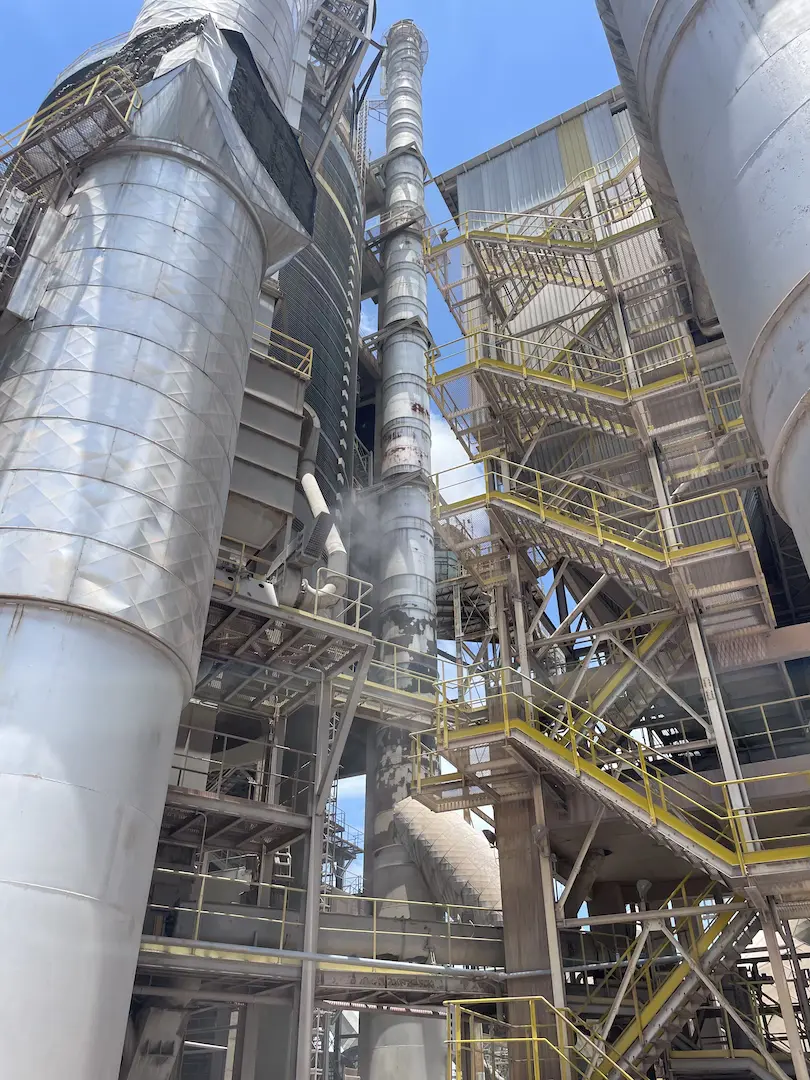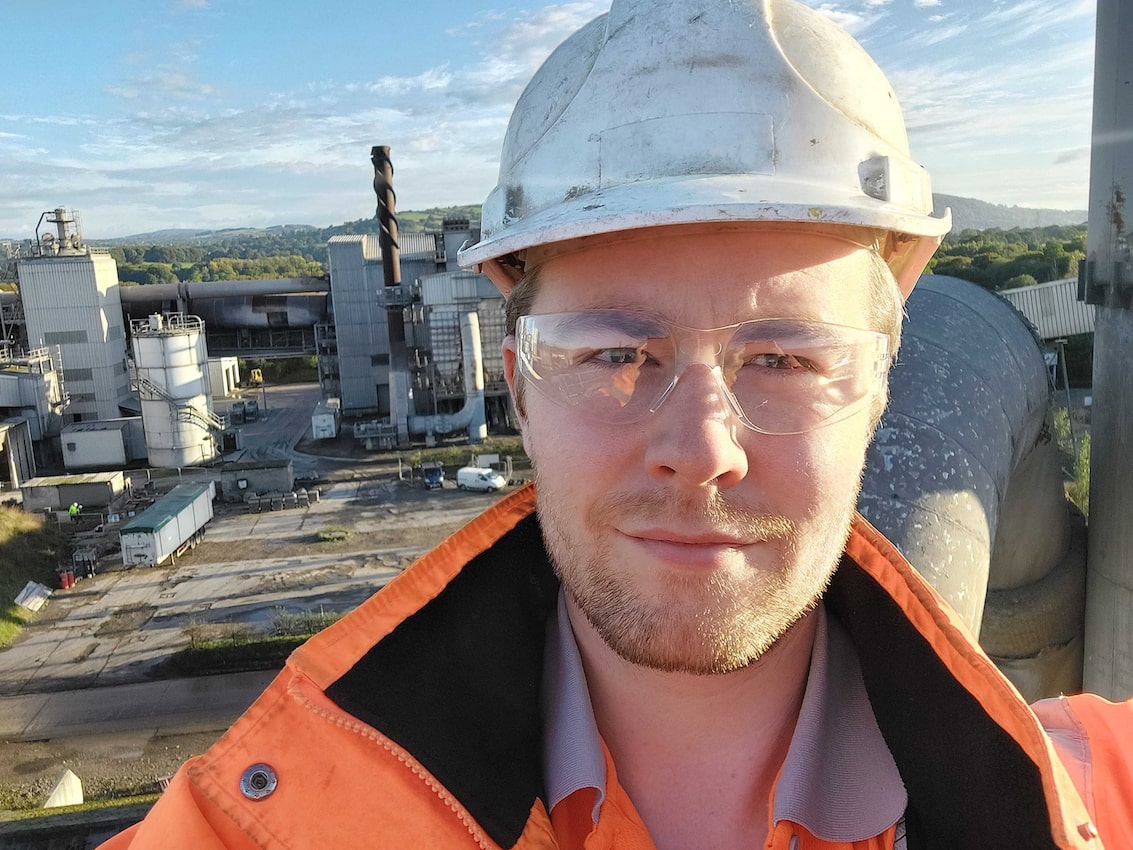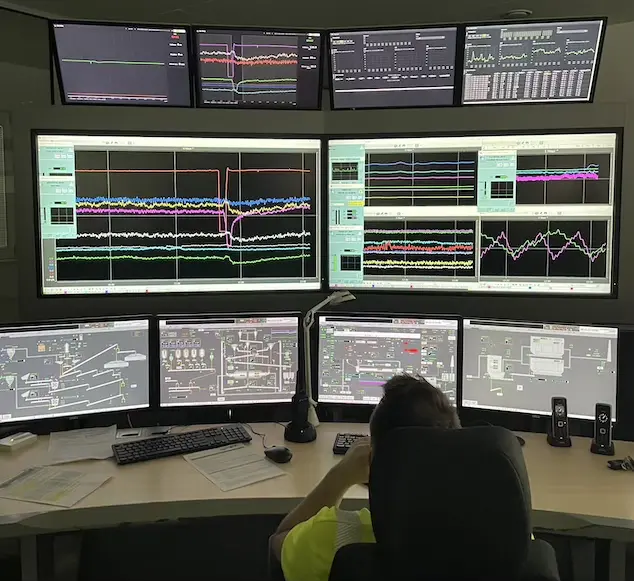
Another morning, another night-shift log to be surveyed. Let’s see what happened overnight. Another trip to the Central Control Room to see the state of the plant equipment.
Through bleary eyes, a smorgasbord of tiny labels and values appear. Most are in the expected operating range; some are highlighted in red for exceeding a High or Low alarm. Some of these have been that way for weeks.
A few are eye-catching:
1. The carbon monoxide parts-per-million reading is in the thousands for the kiln inlet. Probably a miscalibration, it’s been like that for a while.
2. The displayed free lime: a solitary value, entered an hour and a half ago, sitting in an isolated corner of the screen. It says that quality is out of range. I confirm it has been noticed, and operators have already made small adjustments. I suspect the sample was an anomaly or otherwise non-representative. I probably don’t have the time to check before the next sample comes in.
3. One of the cyclone pressures is flitting from its standard negative pressure to zero for a moment, then back again. This is probably just a blocked pressure ring. Hopefully. I should go and check that out manually…
Sound familiar?
Process engineers, operational managers and kiln controllers are inundated by a plethora of signals, all vying for their attention, alongside analysis that must be completed in a tight timeframe. This is made even more challenging with the introduction of novel technologies and increasing use of alternative fuels. When I was a process engineer, I sometimes felt there was just too much to address effectively with the limited hours available, and the efficiency of the process was impacted as a result.
Now, at Carbon Re, I am using my experience and expertise to help develop tools that I wish I had when working in the industry. We provide cutting-edge solutions that help visualise, predict, and control key process parameters, aiding visualisation of process issues and leading to operational efficiency improvements.


Below are a few that would have been most impactful to me.
1. A custom-built “combustion poor performance period” sensor. This tool scours gas analyser data in order to provide a clear analysis of when the combustion process can be improved to achieve performance gains. The tool removes cleaning cycle interference, calibrating the signal as it drifts over time, and highlights which periods of time should have been higher / lower oxygen. Our oxygen target recommender, seamlessly integrated with any expert system, automatically adjusts the setpoints to keep the plant running safe and lean.
2. Clinker samples being taken every two hours only give brief insights into the product of the pyroprocess due to the infrequent intervals. Worse yet, there is the possibility of a sample being missed, or non-representative anomalies being picked up. Our quality soft sensors give a real-time prediction of clinker quality based on plant parameters. With this, the calculated alite and free lime content can be viewed at any given time.
In situations like the one described above, having a sense-checker for decision-making helps massively. When in control mode, the clinker quality recommenders integrate with expert systems to add predictive control to the burning zone, reducing wasted heat and saving energy.
3. Our most recent success is an anomaly detection tool aimed at tackling the worst of kiln conditions, such as cyclone blockages and kiln ring formations. Rather than simply analysing ‘danger zones,’ such as high chloride, sulphur, and temperature fluctuations, we can observe direct signals to generate alarms and warnings. These can sometimes come hours in advance of a blockage event occurring. Being deterministic about when an adverse event is going to happen is game-changing and gives great confidence to operators and engineers alike. Managing to make changes to the process to prevent a kiln stop is the tool equivalent of an unsung hero.
At Carbon Re, we understand the industry we are working to decarbonise. Combining world-class machine learning solutions with industry experience, we offer solutions that improve KPI results while removing some of the uncertainty from the decision-making process. Having previously worked as a process engineer, I know first-hand that these are all features with great potential.
Our solutions address the scenarios described above by providing engineers with greater confidence in interpreting data, freeing up valuable work time, and encouraging continuous improvement in efficiency KPIs week after week.
That’s why I wish I had Carbon Re when I was working in the industry.

